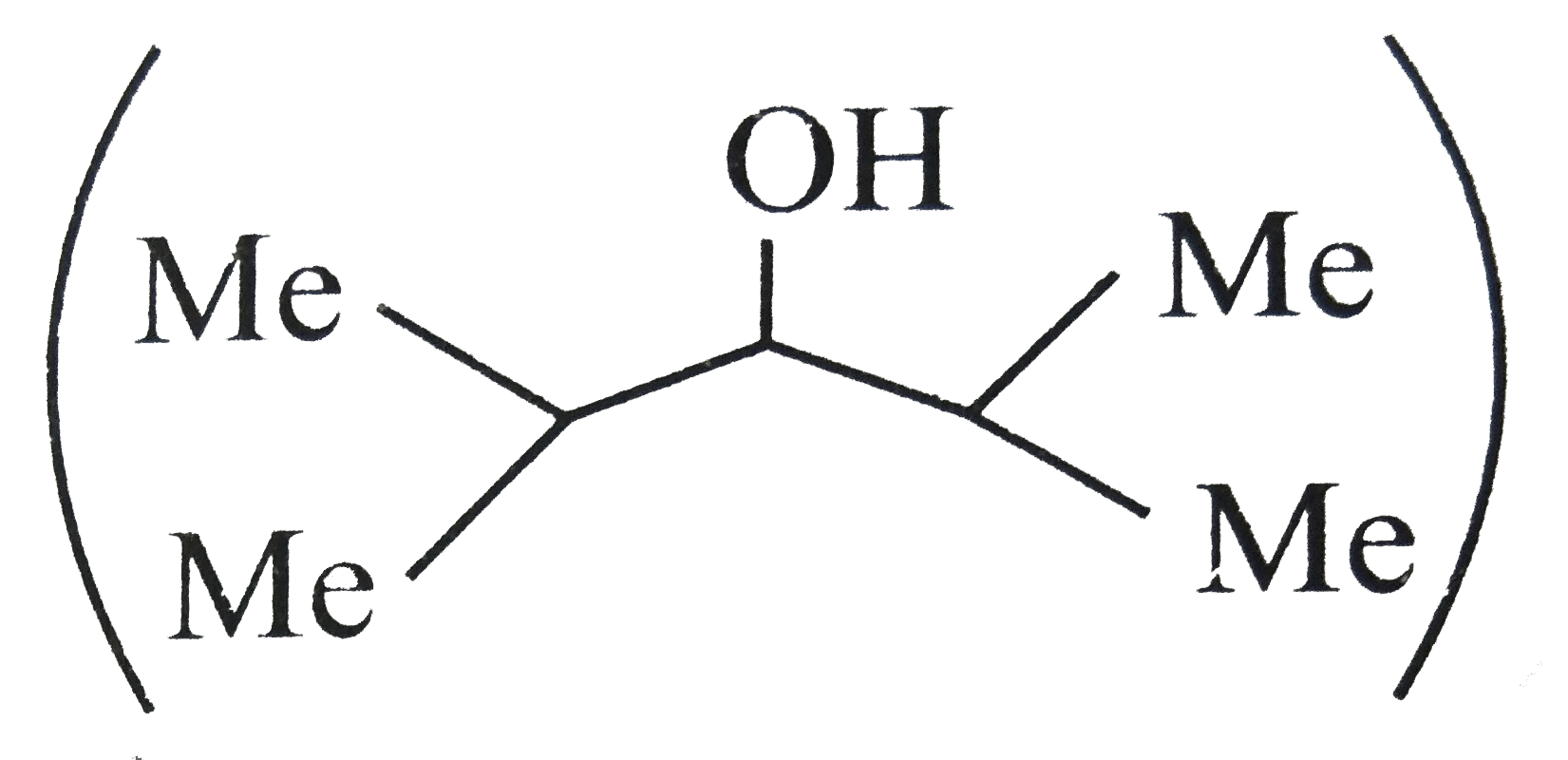The adduct of a compound (A) with isopropyl magnesium halide on hydrolysis gives a tertiary alcohol. The compound (A) is:
An ester
A secondary alcohol
A primary alcohol
An aldehyde
The correct Answer is:A
To solve the question, we need to identify the compound (A) that, when reacted with isopropyl magnesium halide (a Grignard reagent), produces a tertiary alcohol upon hydrolysis. Let's break down the steps:
1. Understanding Grignard Reagents:
- Grignard reagents are organomagnesium compounds that react with various electrophiles to form new carbon-carbon bonds. The general formula for isopropyl magnesium halide is (CH3)2CHO-MgX, where X is a halogen.
2. Identifying the Nature of the Product:
- The problem states that the hydrolysis of the adduct gives a tertiary alcohol. This means that the carbon atom to which the hydroxyl group (OH) is attached must be bonded to three other carbon atoms.
3. Considering Possible Compounds for (A):
- To yield a tertiary alcohol, compound (A) must be a carbonyl compound (like a ketone or an ester) that can react with the Grignard reagent.
4. Testing an Ester:
- Let's consider an ester, such as ethyl acetate (CH3COOCH2CH3).
- When ethyl acetate reacts with isopropyl magnesium halide, the nucleophilic carbon from the Grignard reagent attacks the carbonyl carbon of the ester.
5. Reaction Mechanism:
- The reaction proceeds as follows:
- The alkyl part of the Grignard reagent (isopropyl) attacks the carbonyl carbon of the ester.
- The double bond shifts to the oxygen, forming a tetrahedral intermediate.
- Upon hydrolysis, this intermediate will yield a ketone and an alcohol.
6. Formation of Tertiary Alcohol:
- If we consider the product formed after hydrolysis, we will have a tertiary alcohol because the carbon that is now bonded to the hydroxyl group (OH) will be attached to three alkyl groups (two from isopropyl and one from the original ester).
7. Conclusion:
- Since the reaction of ethyl acetate with isopropyl magnesium halide leads to the formation of a tertiary alcohol, we conclude that the compound (A) is indeed an ester, specifically ethyl acetate.
Final Answer:
The compound (A) is ethyl acetate (CH3COOCH2CH3).
- Grignard reagents are organomagnesium compounds that react with various electrophiles to form new carbon-carbon bonds. The general formula for isopropyl magnesium halide is (CH3)2CHO-MgX, where X is a halogen.
- The problem states that the hydrolysis of the adduct gives a tertiary alcohol. This means that the carbon atom to which the hydroxyl group (OH) is attached must be bonded to three other carbon atoms.
- To yield a tertiary alcohol, compound (A) must be a carbonyl compound (like a ketone or an ester) that can react with the Grignard reagent.
- Let's consider an ester, such as ethyl acetate (CH3COOCH2CH3).
- When ethyl acetate reacts with isopropyl magnesium halide, the nucleophilic carbon from the Grignard reagent attacks the carbonyl carbon of the ester.
- The reaction proceeds as follows:
- The alkyl part of the Grignard reagent (isopropyl) attacks the carbonyl carbon of the ester.
- The double bond shifts to the oxygen, forming a tetrahedral intermediate.
- Upon hydrolysis, this intermediate will yield a ketone and an alcohol.
- If we consider the product formed after hydrolysis, we will have a tertiary alcohol because the carbon that is now bonded to the hydroxyl group (OH) will be attached to three alkyl groups (two from isopropyl and one from the original ester).
- Since the reaction of ethyl acetate with isopropyl magnesium halide leads to the formation of a tertiary alcohol, we conclude that the compound (A) is indeed an ester, specifically ethyl acetate.
The compound (A) is ethyl acetate (CH3COOCH2CH3).
Similar Questions
Knowledge Check
The adduct of the compound 'A' obtained by the reaction with excess of isopropyl magnesium iodide , upon hydrolysis gives a tertiary alcohol. The compound 'A' is
AAn esterBA secondary alcoholCA primary alcoholDAn aldehydeThe compound which has one isopropyl group is −
A2,2,3,3-TetramethylpentaneB2,2-DimethylpentaneC2,2,3, TrimethylpentaneD2-MethylpentaneWhich compound is tertiary alcohol ?
A1-propanolB2-methyl-1-hexanolC3-methyl-2-hexanolD2-methyl-2-hexanol
Molecular formula(A)C4H10O on acid hydrolysis gives two mole of same alcohol.The compound A is
View SolutionPropyl ester reacts with isopropyl magnesium bromide to give 2∘ alcohol
 The ester is :
The ester is :
View SolutionPropyl lithium reacts with ethene to give a compound (A), which on reaction with methanal followed by acidic hydrolysis gives compound (B). The compound (B) is :
View SolutionCompound A on reduction gives B which on further reaction with CHCl3 and alcoholic KOH gives compound C which of further hydrolysis gives aniline. The compound A is :
View SolutionAn organic compound (A) on reduction gives compound (B) which on treatment with CHCI3 and alcoholic KOH gives compound (C) which on hydrolysis gives aniline but on compound (C) which on hydrolysis gives aniline but on catalytic reduction gives n-methylaniline The compound (A) is .
View Solution

